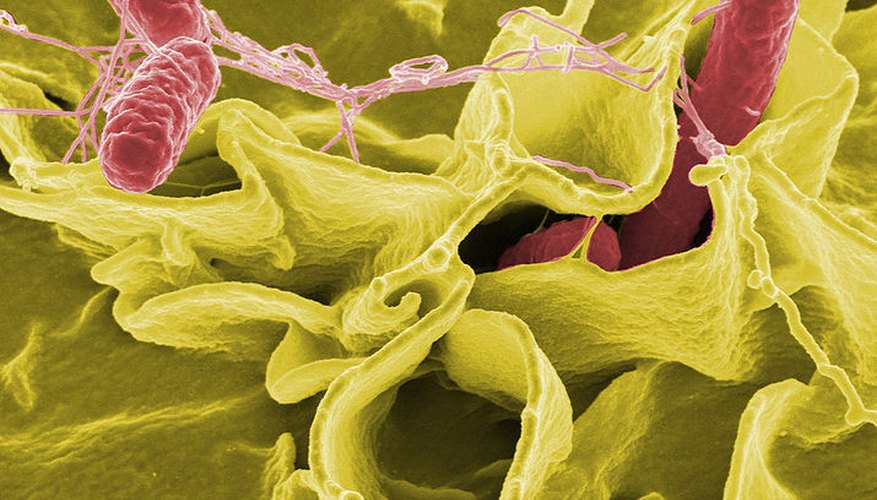The body's immune system works to prevent disease causing (pathogenic) bacteria from entering or spreading inside the body. Skin that isn't wounded is one of these barriers. It contains Langherhans cells, which help to put the immune system on "alter" should bacteria invade. Other barriers inside the body include earwax, ear hairs, tears, urine and mucus lining the nose, throat and digestive tract, which all work to help continually clean the body out. Saliva, harsh acids in the stomach and friendly bacteria inside the digestive system can also kill invading bacteria, according to Dr. T.M. Wassenaar of The Virtual Museum of Bacteria. The spleen also acts as a filter to detect bacteria.
- The body's immune system works to prevent disease causing (pathogenic) bacteria from entering or spreading inside the body.
- Other barriers inside the body include earwax, ear hairs, tears, urine and mucus lining the nose, throat and digestive tract, which all work to help continually clean the body out.
Preventing Infection
The body's immune system works to prevent disease causing (pathogenic) bacteria from entering or spreading inside the body. Skin that isn't wounded is one of these barriers. It contains Langherhans cells, which help to put the immune system on "alter" should bacteria invade. Other barriers inside the body include earwax, ear hairs, tears, urine and mucus lining the nose, throat and digestive tract, which all work to help continually clean the body out. Saliva, harsh acids in the stomach and friendly bacteria inside the digestive system can also kill invading bacteria, according to Dr. T.M. Wassenaar of The Virtual Museum of Bacteria. The spleen also acts as a filter to detect bacteria.
- The body's immune system works to prevent disease causing (pathogenic) bacteria from entering or spreading inside the body.
- Other barriers inside the body include earwax, ear hairs, tears, urine and mucus lining the nose, throat and digestive tract, which all work to help continually clean the body out.
Killing Invaders
If pathogenic bacteria get through all the immune system's initial defences, the arsenal of the complement system is initiated. The complement system includes proteins and white blood cells, which carry antibodies. The antibodies are microscopic killing cells that seek out anything they don't recognise as being part of the body. The white blood cells and the proteins work together to coat any invading bacteria with antigen, which makes often makes the bacteria incapable of reproducing or binds the bacterium to a toxic chemical to make it break apart.
- If pathogenic bacteria get through all the immune system's initial defences, the arsenal of the complement system is initiated.
- The white blood cells and the proteins work together to coat any invading bacteria with antigen, which makes often makes the bacteria incapable of reproducing or binds the bacterium to a toxic chemical to make it break apart.
Developing Immunity
The cells in the blood that detect pathogenic bacteria and signal the complement system to get to work are called macrophages. The bacteria are passed on to T cells (made in the thymus) and B cells (made in the bone marrow) that are able to recognise and remember how to manufacture the specific antibody to break apart the bacteria. According to the CDC, through the use of vaccinations, these cells are given the knowledge of how to deal with invading bacteria or viruses without risking the entire body getting deathly sick.
